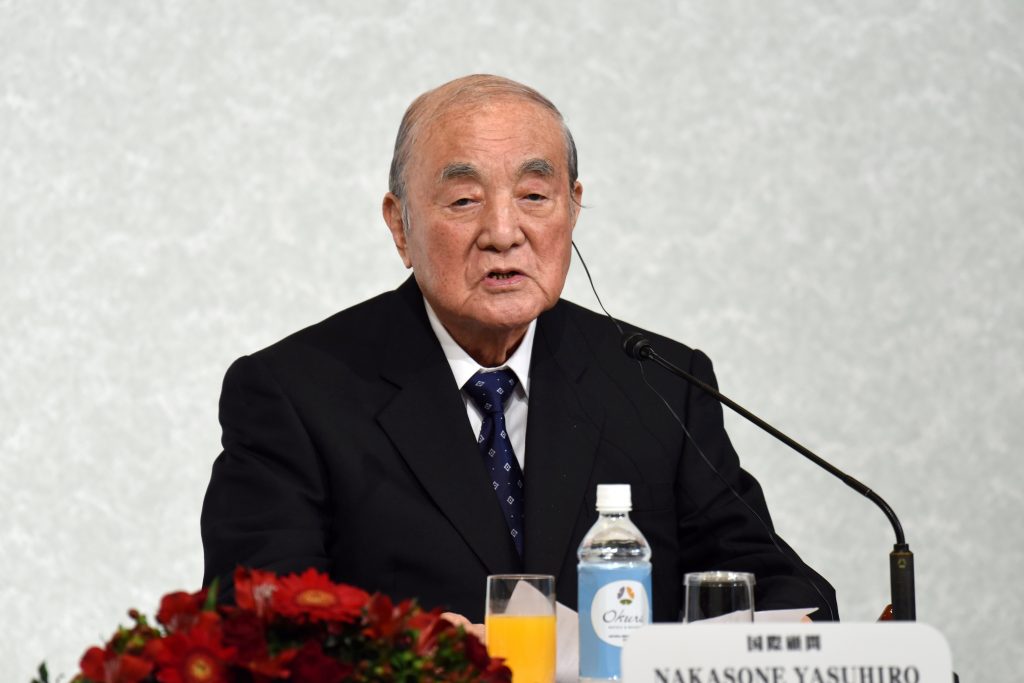
- ARAB NEWS
- 19 May 2024

TOKYO: Yasuhiro Nakasone, who devoted his prime ministership to strengthening Japan's relationship with the United States and promoting administrative reform, died on Friday. He was 101.
Nakasone's lengthy political career spanned the turbulent decades from Japan's post-World War II ruin to its phenomenal rise to economic power status and protracted malaise that followed the bubble economy.
Born in Takasaki, Gunma Prefecture, eastern Japan, in May 1918, Nakasone graduated from Tokyo Imperial University, now the University of Tokyo, and entered the Home Ministry in 1941. After a stint as an officer in the Imperial Japanese Navy, he was elected to the House of Representatives for the first time in April 1947 from a Gunma constituency.
He was elected to the Lower House 20 consecutive times, including from a regional proportional representation bloc.
After belonging to a number of political parties, Nakasone was a founding member of the Liberal Democratic Party, which was created in 1955 through the merger of two conservative parties and held the reins of government almost uninterruptedly for more than 50 years until it was ousted by the then Democratic Party of Japan in 2009.
Nakasone assumed his first ministerial post when he was appointed director-general of the Science and Technology Agency under the cabinet of Prime Minister Nobusuke Kishi in 1959.
He later took such posts as transport minister, director-general of the Defense Agency, minister of international trade and industry, director-general of the administrative management agency and secretary-general of the LDP.
As director-general of the administrative management agency under the cabinet of Prime Minister Zenko Suzuki, Nakasone was instrumental in the establishment of the second ad hoc commission on administrative reform in 1981.
Elected president of the LDP, he became prime minister in November 1982, taking up the banner of a wholesale review of postwar politics.
Pushing further the administrative reform policy of the Suzuki government, Nakasone took the initiative as prime minister in breaking up and privatizing the state-run Japanese National Railways to create the Japan Railways Group in 1987.
He also presided over the 1985 privatization of Nippon Telegraph and Telephone Public Corp., currently Nippon Telegraph and Telephone Corp., and Japan Tobacco and Salt Public Corp., now Japan Tobacco Inc.
On the diplomatic and security front, Nakasone declared that Japan and the United States shared the same destiny and came to be on a first-name basis with then U.S. President Ronald Reagan, a relationship known as the "Ron-Yasu" friendship.
With a foundation of solid Japan-U.S. ties, Nakasone raised Japan's profile in the international arena.
In a decision symbolizing his commitment to stronger ties with the United States, his government compiled a budget for fiscal 1987 featuring defense expenditure exceeding one pct of gross national product, long a self-imposed ceiling for a country where pacifist sentiment runs deep.
In 1985, Nakasone became the first sitting postwar prime minister to pay respects at Yasukuni Shrine in an official capacity. The controversial Shinto shrine in Tokyo is regarded as a symbol of Japan's past militarism in other Asian countries, such as China and South Korea, which suffered Japan's atrocities before and during World War II.
His tenure as prime minister lasted five years, from 1982 to 1987, making him the fifth longest-serving Japanese leader in the postwar era. His period as head of government has been exceeded only by Shinzo Abe, the current leader, Eisaku Sato, Shigeru Yoshida and Junichio Koizumi.
Heading a small faction within the LDP, Nakasone often changed political course abruptly at key junctures, earning him an unwelcome reputation as a fence-sitter.
In 1997, he was awarded the Grand Cordon of the Supreme Order of the Chrysanthemum.
He chose not to run in the 2003 Lower House election and resigned as lawmaker after being asked to retire from politics by then Prime Minister Koizumi in line with the LDP's mandatory retirement age rule for a candidate under the proportional representation system.
After retirement, Nakasone actively discussed the Constitution and education in speeches and on other occasions.
In a book published in May 2017, he called for the Self-Defense Forces to be redefined clearly as a "self-defense military" in the Constitution's Article 9, referring to Abe's proposal to rewrite the war-renouncing clause.
At a party celebrating his 99th birthday in the same month, Nakasone reiterated his focus on constitutional reform, saying, "It is the wish of my life."
JIJI Press